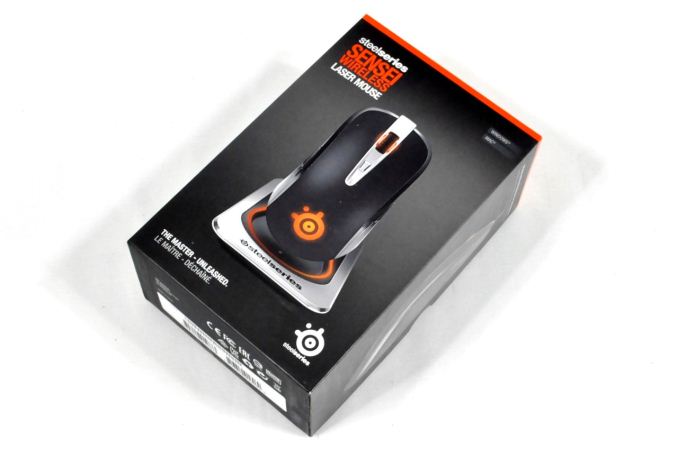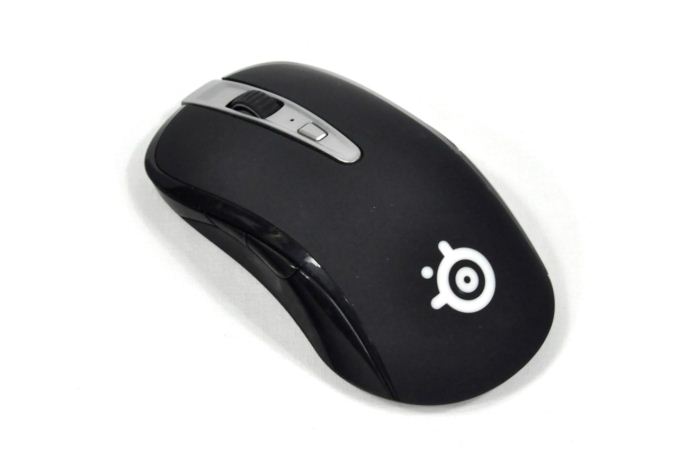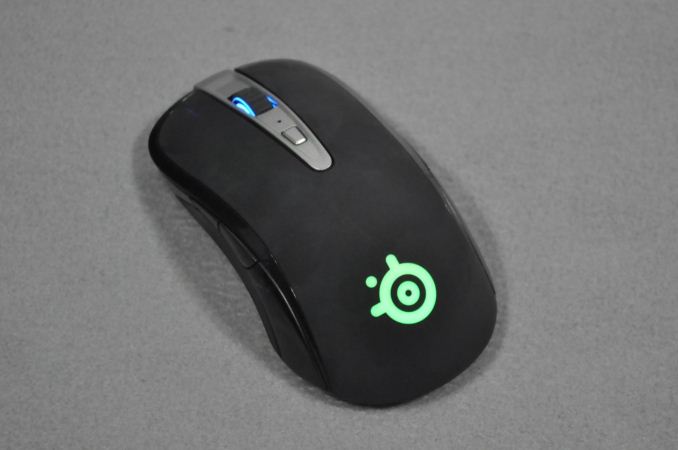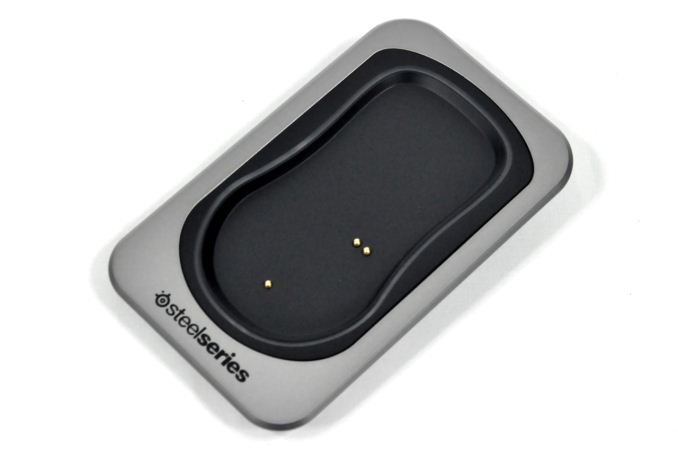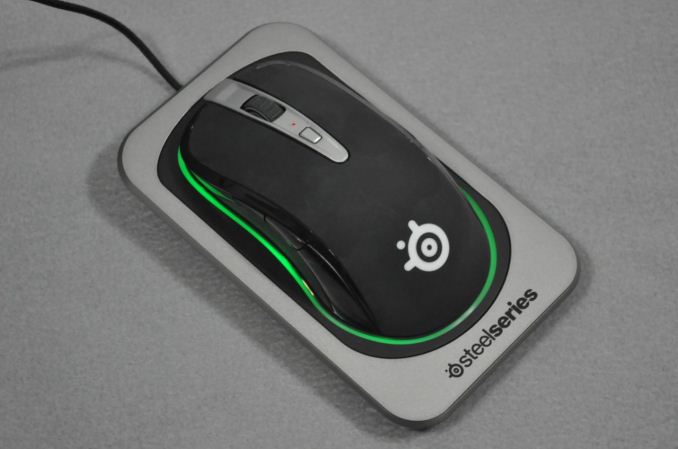
Original Link: https://www.anandtech.com/show/7971/steelseries-sensei-wireless-gaming-mouse-review
Steelseries Sensei Wireless Gaming Mouse Review
by E. Fylladitakis on May 1, 2014 6:00 AM EST- Posted in
- Gaming
- Mouse
- SteelSeries

Most advanced users, especially those that are interested in gaming, have almost certainly heard of SteelSeries, a reputable manufacturer of gaming-related peripherals and hardware. The company originates from Denmark and today has offices in the US and Taiwan. They have a very large selection of products available and we cannot possibly cover them all in a single review, but today we will be having a look at their most advanced (and expensive) mouse, the Sensei Wireless.
We received the Sensei Wireless inside a simple, well-designed, hard cardboard box, which should offer ample shipping protection to the lightweight mouse. Aside from the mouse itself, the only other items inside the box are the dock, the USB cable, a company sticker, and a basic manual. There is no CD with the required software, which instead must be downloaded from the company's website.
The SteelSeries Sensei Wireless Mouse
The SteelSeries Sensei Wireless is a symmetrical mouse of classic design. It is a good choice for left handed or ambidextrous users and very comfortable for prolonged use, although perhaps not as ideal as ergonomic mice that are shaped to fit either the left or the right hand. For instance, the Sensei Wireless has two buttons on either side of the mouse. Two of these buttons can easily be pressed by a thumb but it is painfully frustrating to press the other two with your pinky or ring finger. The ribbed wheel of the mouse offers good feedback and comfort, without being too stiff or too soft. There is only one button at the top of the Sensei Wireless that, if not re-programmed, can be used to cycle through the CPI settings.
The top and sides of the SteelSeries Sensei are made of corona treated ("rubberized") plastic, which feels comfortable to the hand and improves adhesion. The company logo can be seen at the top part of the mouse, which illuminates once the mouse is powered on. You can even pick the illumination color and intensity through the software, as well as select from a couple of visual effects, such as "breathe" and "battery status". The default colors of the mouse are red and it is set on "breathe", but these can be easily changed to virtually any color combination and intensity possible.
Perhaps the most interesting feature of the Sensei Wireless is its metallic charging dock. The heavy dock has a metallic surrounding frame but its central and bottom parts are plastic. It is heavy enough so that it won't slide around on your desk and it's shaped to be a perfect fit for the mouse. It also acts as the wireless receiver, but unfortunately the fact that the wireless receiver is integrated into this large, heavy, metallic dock reduces the portability of the Sensei Wireless down to virtually zero, at least if you want to use it in wireless mode. An illuminated ring surrounds the dock, which can also be programmed via the software.
The cable that SteelSeries provides can be connected to either the charging dock or the mouse itself. This way, if you run out of battery, you can just connect the cable to the mouse and keep playing. The proprietary molding of the cable is a perfect fit for either the mouse or the dock. The connector will lock into place once attached to the mouse and you'll need to be careful and not forget about the unlocking button when removing it, as otherwise it is easy to cause permanent damage. There is a catch too; due to the proprietary shape of the connector, finding an exact replacement will be a pain should you lose or damage yours. A typical mini USB cable will fit into the dock but it will not really be a good match for the mouse.
The Software
SteelSeries obviously tried to keep the software simple and easy to use, as everything is crammed into a single window. The actions of the buttons can be adjusted on the left side of the panel, including the programming/selection of macros. The user can program macros using the keys of the mouse and/or keyboard, as well as adjust the delays between keystrokes, but the macro recorder will not register the movements of the mouse.
The middle portion of the application window let's you adjust the illumination color and effects of the logo and the wheel on the mouse, as well as the ring on the dock. You can select any color you like, as the RBG design theoretically supports 16.7 million colors. As we've mentioned before, however, most of the changes with such lighting schemes are minor at best, and users will typically select from one of about 8-20 primary colors.
On the right section, SteelSeries places a column with all of the settings of the mouse: CPI programming, battery saver settings, sleep timer, acceleration and deceleration sensitivity, lift distance, angle snapping and, finally, the polling rate. The CPI can go up to 8200, a ludicrous figure, as a simple twinkle of your wrist sends the cursor flying across the screen.
Performance and Conclusion
In terms of performance, the Sensei Wireless delivers as promised. We found that the mouse would react perfectly on any surface, including wood, paper, stone, and even glass. A good mousepad however is strongly recommended, not for increased accuracy or anything like that, but simply because it will significantly reduce the gliding effort and will not damage the feet of the mouse.
The Sensei Wireless is very comfortable to use, even if you (like myself) are used to hand-specific ergonomic designs, but it is very lightweight and there is no way to adjust its weight. Some hardcore gamers like to adjust the shape of their mice, which is not possible with the Sensei Wireless. As far as battery life goes, the company promises sixteen hours of battery life; we were able to squeeze nineteen hours out of our sample, about five of them in games and fourteen on desktop use.
While working with the Sensei Wireless, we could see why many gamers liked SteelSeries' Sensei series so much in the past. While it may have a rather simple design, it is very comfortable to use and feels very sturdy as well. We should also remember our veteran mice, as the first and most widely used optical mice were symmetrical. Old habits die hard and we are almost certain that nearly every reader of this article who has seen more than thirty summers, at some point of their lives, has used a Microsoft Intellimouse or Logitech Cordless Wheel Mouse for at least several months. Those that grew up with and are strongly accustomed to the use of symmetrical mice will surely appreciate the comfort and feel of the Sensei Wireless.
On the other hand, the Sensei Wireless is being marketed not simply as a good mouse but as a top-tier gaming mouse. It is very comfortable for prolonged use and the sensor is excellent, while the software offers ample options. However, the Sensei Wireless is also missing quite a few things. While its light weight is very comfortable for prolonged use, hardcore gamers would at least appreciate the option to adjust its weight somewhat. Hardcore gamers would also most likely appreciate more buttons on the mouse, as four (and with two of them placed next to the small finger) might be a bit too few for some.
Nevertheless, these are all but insignificant issues next to the real problem this product has: its retail price. The Sensei Wireless truly is a very interesting mouse, of excellent quality and very comfortable to use; however, with a retail price of $159.99 / €159.99, the competition is tremendous. The Sensei Wireless is priced well over many other very popular wireless gaming mice; in fact, if not for a few Mad Catz products, it would be the most expensive wireless gaming mouse in existence. In many cases you could buy two or even three high quality gaming mice for the price of a single Sensei Wireless - e.g. one for the home, one for the office, and one for your laptop.
To summarize, the SteelSeries Sensei undoubtedly is a very good gaming mouse, but is it good enough to justify such a price premium? That's largely up to individual tastes, so you can decide that for yourselves. Personally, it's difficult to recommend at the current price, and most people would be unlikely to notice any real improvement in their gaming skills. It's a good mouse, sure, but $160 good? For most users, probably not, but there's a niche market of hardcore gamers that might (it's a long shot) be willing to pony up that much money for a wireless symmetrical mouse.

